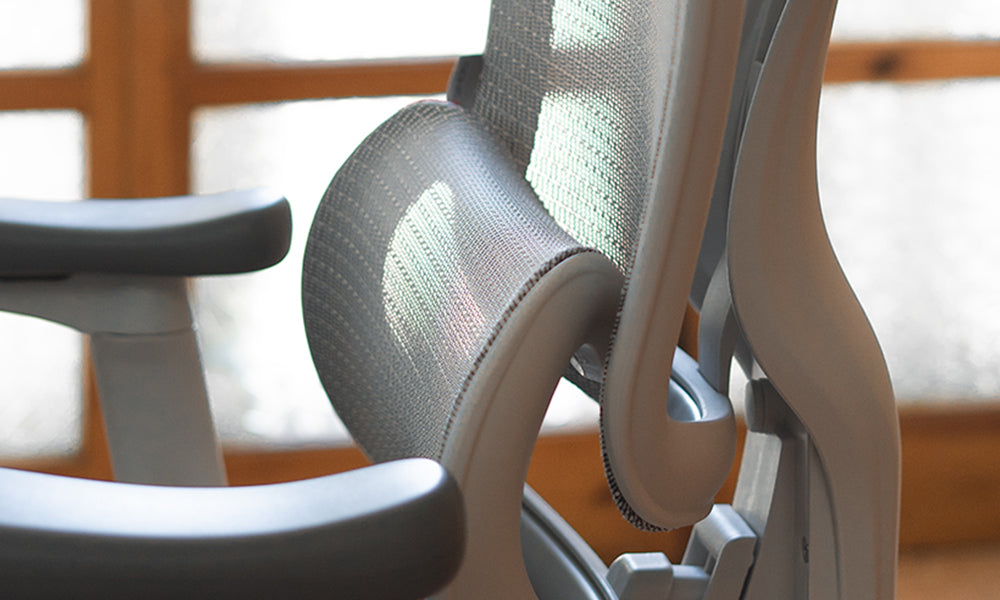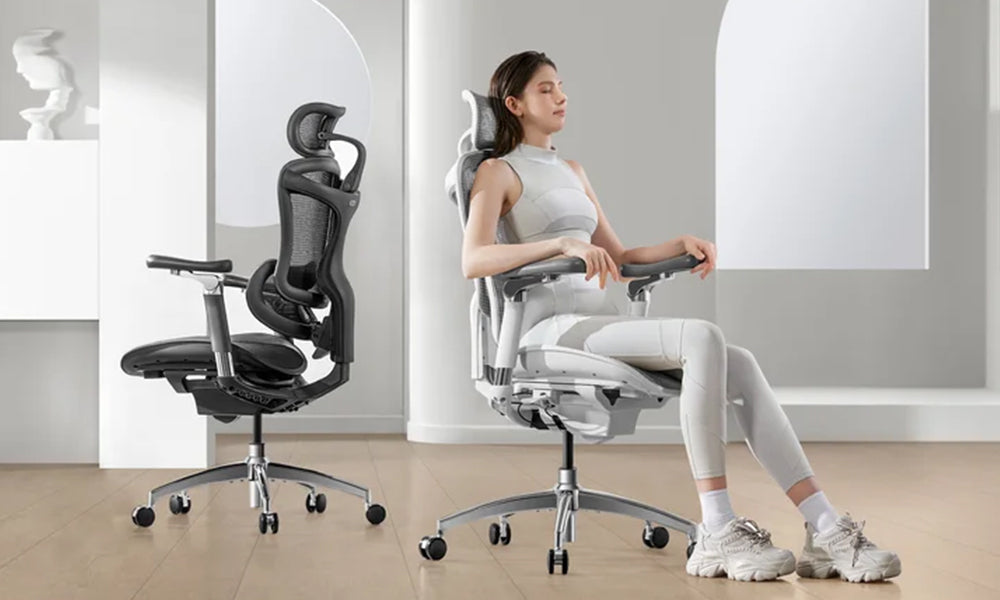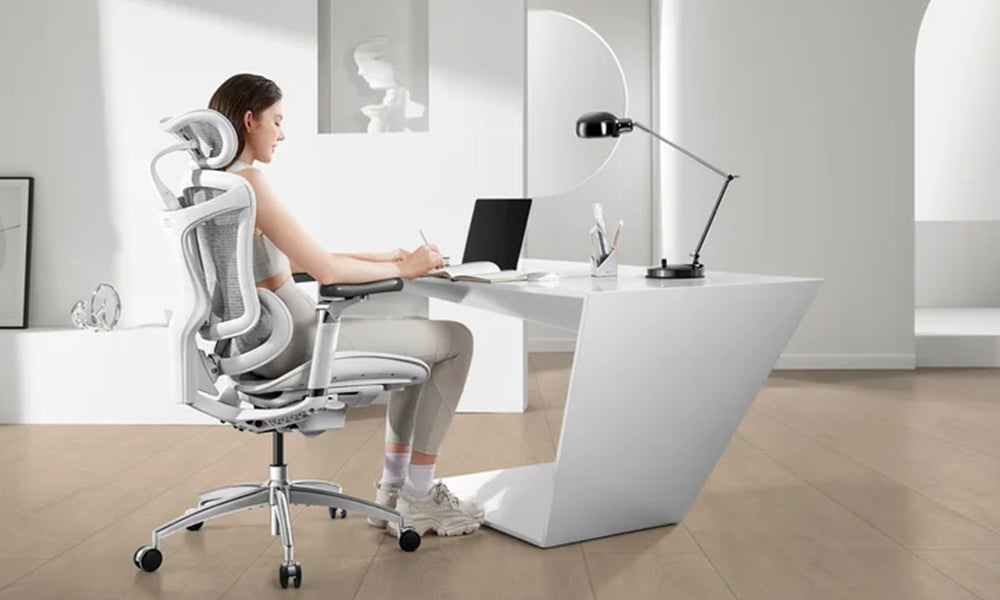Among the various features that claim to enhance comfort and productivity, lumbar support stands out as a key player. But is a chair with lumbar support truly synonymous with an ergonomic office chair? In this exploration, we delve into the science behind ergonomics, the significance of lumbar support, and whether it lives up to the expectations of the perfect office chair.
Understanding Ergonomics
Ergonomics, derived from the Greek words "ergon" (meaning work) and "nomos" (meaning natural laws), is the study of designing and arranging things to maximize efficiency and comfort. When applied to office furniture, especially chairs, the goal is to create an environment that promotes good posture, reduces strain on the body, and minimizes the risk of musculoskeletal disorders.
An ergonomic office chair, therefore, goes beyond being a mere piece of furniture. It's a tool designed to support the natural curvature of the spine, maintain a neutral body position, and adapt to the user's movements. The chair becomes an ally in the battle against the sedentary nature of office work, aiming to prevent the aches, pains, and long-term health issues associated with prolonged sitting.
Lumbar Support: The Backbone of Ergonomics?
Enter lumbar support, a feature that often takes the spotlight in discussions about ergonomic chairs. The lumbar region refers to the lower part of the spine, and lumbar support is designed to provide additional support to this area. The rationale is simple: maintaining the natural curve of the spine (lordosis) helps distribute the body's weight evenly, reducing stress on the lower back.
The lumbar spine has a natural inward curve, and sitting for extended periods can flatten this curve, leading to discomfort and pain. Lumbar support aims to counteract this by filling the gap between the chair and the lower back, offering crucial support to the lumbar region. But does this feature automatically qualify a chair as truly ergonomic?
The Role of Adjustability
While lumbar support is undoubtedly a key component of an ergonomic chair, it's not a one-size-fits-all solution. The human body is diverse, and what works for one person may not work for another. This is where the importance of adjustability comes into play.
A truly ergonomic chair is one that allows users to customize various elements to suit their unique needs. This includes not only the height of the chair but also the depth and intensity of the lumbar support. Chairs with fixed lumbar support may not cater to everyone, as the ideal position for the lumbar region can vary from person to person.
Adjustable lumbar support ensures that individuals can fine-tune the chair to fit their body shape and size, promoting a more personalized ergonomic experience. It acknowledges the fact that everyone's spine is different and that a one-size-fits-all approach may fall short in delivering optimal comfort and support.
The Myth of Passive Ergonomics
Passive ergonomics refers to features built into a chair that require little to no adjustment. While lumbar support can be considered a passive ergonomic feature, it is not the sole determinant of a chair's ergonomic qualities. The term "ergonomic" encompasses a broader spectrum of design considerations, including seat depth, armrest adjustability, and the chair's overall structure.
A chair with lumbar support may alleviate some lower back discomfort, but if other aspects of its design are lacking, it may not offer a comprehensive ergonomic solution. For instance, a chair that lacks proper cushioning or has poorly designed armrests can still lead to discomfort, even if it boasts lumbar support.
Dynamic Movement and Ergonomic Excellence
Ergonomics is not just about static support; it also involves facilitating dynamic movement. The human body is designed for motion, and sitting in one position for an extended period can lead to stiffness and discomfort. An ideal ergonomic chair encourages movement, allowing users to shift their posture, stretch, and maintain circulation.
Some advanced ergonomic chairs incorporate features like swivel mechanisms, reclining options, and seat tilting to promote dynamic sitting. These elements work in harmony with lumbar support, ensuring that the entire body is supported in various postures throughout the day. A chair that encourages movement can contribute significantly to reducing the negative impacts of prolonged sitting.
Beyond Lumbar Support: Considering the Whole Package
While lumbar support is undoubtedly a crucial factor in determining the ergonomic quality of an office chair, it should not be the sole focus. An ergonomic chair should be evaluated as a holistic solution, taking into account various design elements that contribute to overall comfort and well-being.
Seat Design: The seat of an ergonomic chair should be appropriately contoured to distribute body weight evenly and reduce pressure points. A waterfall edge can also prevent numbness and improve circulation by reducing pressure on the thighs.
Armrests: Adjustable and well-designed armrests support the upper body and reduce strain on the shoulders and neck. The ability to customize armrest height and width ensures that users can find a comfortable position that suits their individual anatomy.
Material and Padding: The choice of materials and padding in an ergonomic chair plays a crucial role in comfort. Breathable fabrics and sufficient cushioning contribute to a pleasant sitting experience, preventing discomfort and sweating during long work sessions.
Adjustability: A truly ergonomic chair should offer multiple adjustment options, including seat height, lumbar support depth, tilt angle, and armrest positioning. This adaptability allows users to tailor the chair to their specific needs, promoting a more personalized and comfortable workspace.
Conclusion
In the pursuit of the perfect office chair, it becomes evident that lumbar support is a critical element, but it does not define the entirety of ergonomic excellence. A chair that boasts lumbar support should be evaluated in the context of its overall design, adjustability, and ability to promote dynamic movement.
An ergonomic office chair is a powerful tool that, when designed thoughtfully, can enhance productivity, prevent health issues, and contribute to overall well-being. Lumbar support, in combination with other ergonomic features, can create a symbiotic relationship that transforms a chair into a supportive ally in the demanding world of office work.
As we navigate the intricate landscape of ergonomic design, it becomes clear that the quest for the perfect office chair involves considering the chair as a holistic solution—one that addresses the diverse needs of individuals and supports their well-being through thoughtful and adaptable design. So, is a chair with lumbar support an ergonomic office chair? Yes, but it's only one piece of the puzzle in the larger picture of ergonomic excellence.




